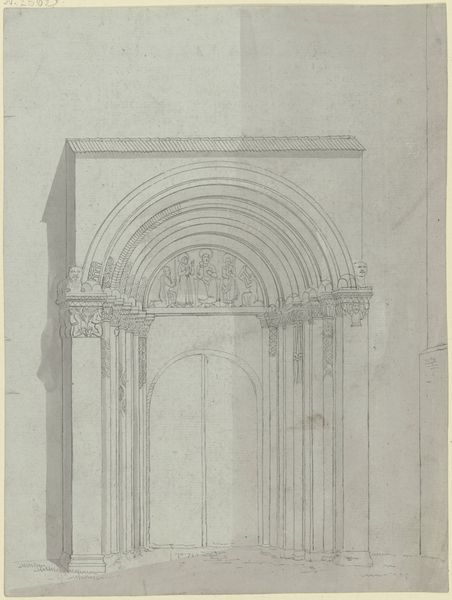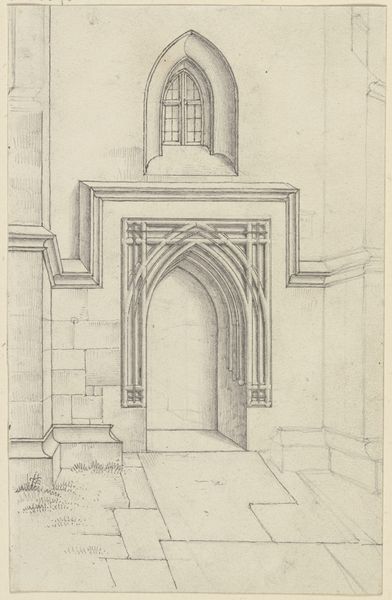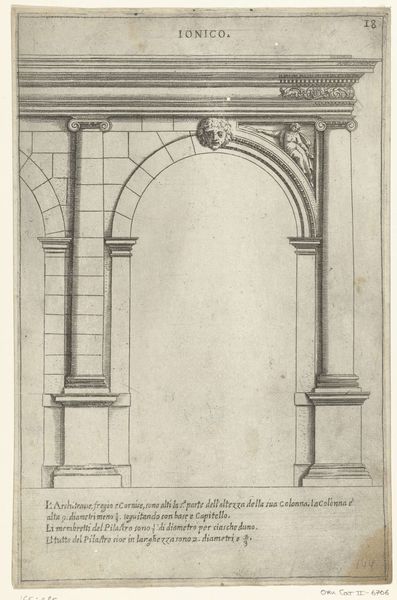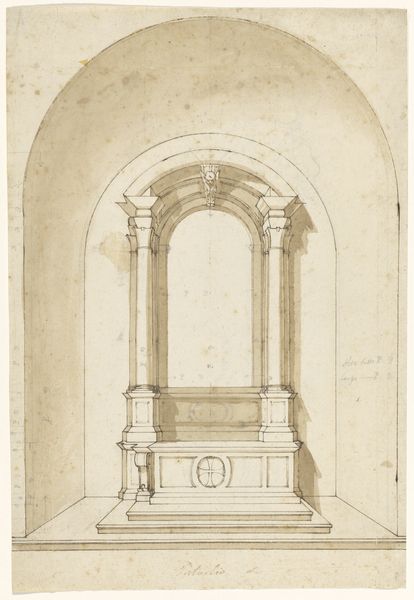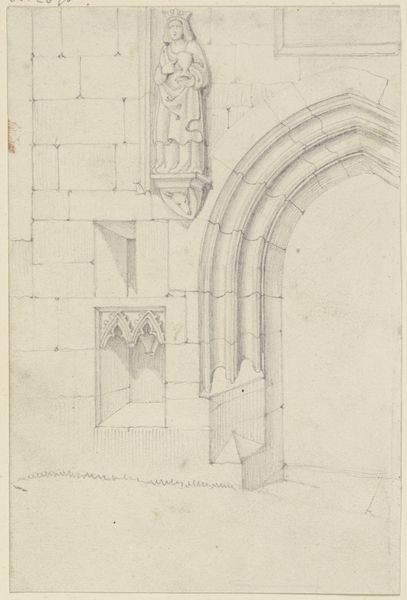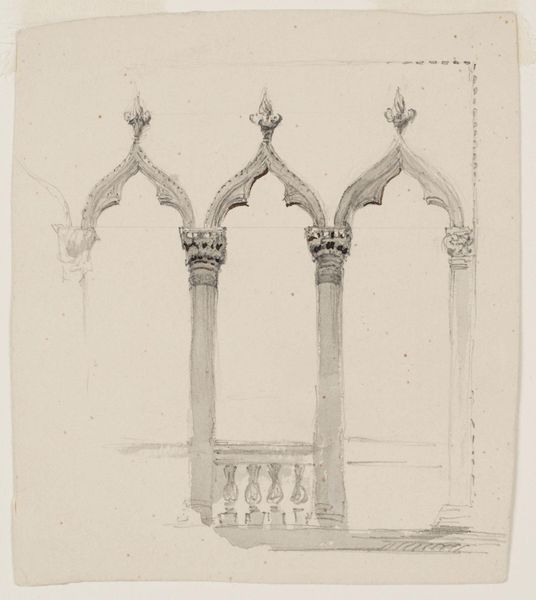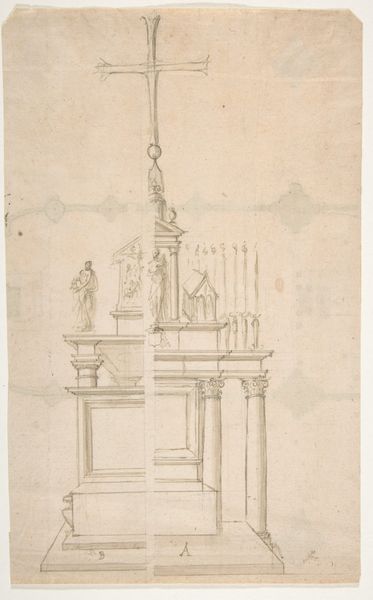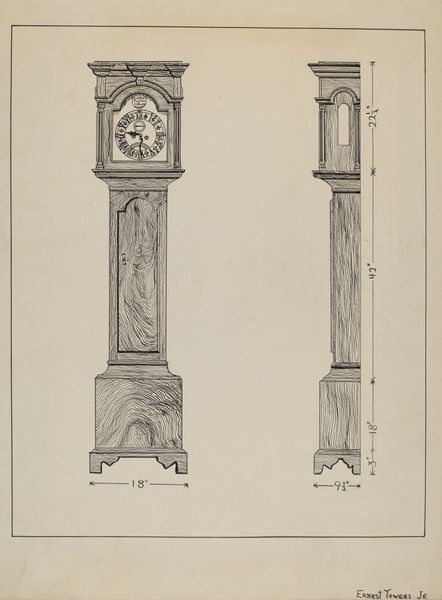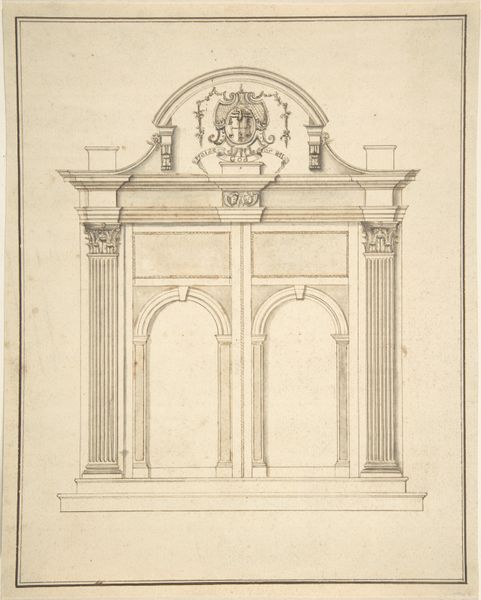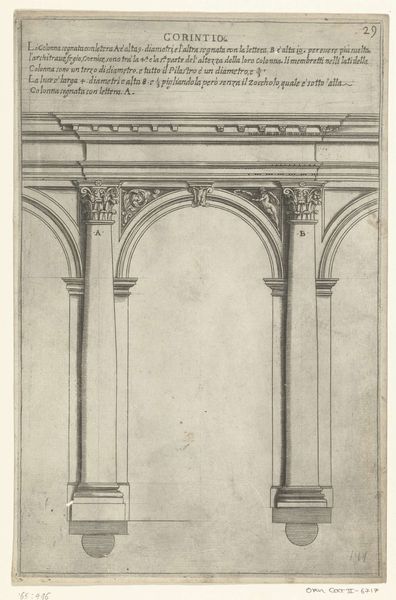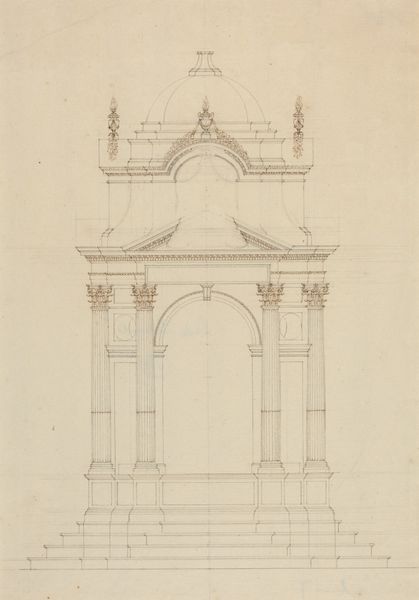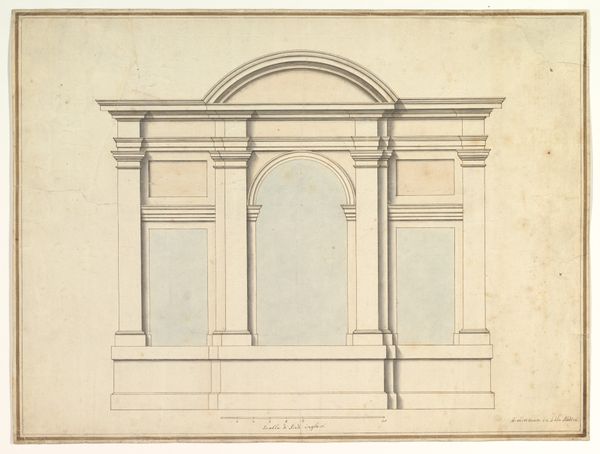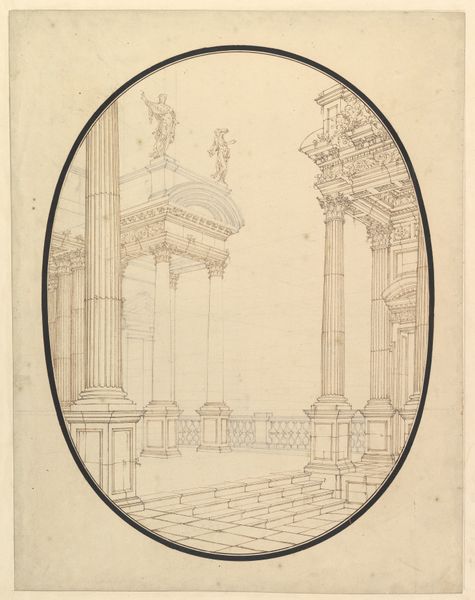
Proposed Monument to John L. Carey of Baltimore 1852 - 1854
0:00
0:00
drawing, print, pencil, architecture
#
portrait
#
drawing
# print
#
pencil sketch
#
etching
#
pencil
#
history-painting
#
academic-art
#
architecture
Dimensions: sheet: 13 1/8 x 7 3/8 in. (33.3 x 18.7 cm) image: 10 3/4 x 6 5/8 in. (27.3 x 16.8 cm)
Copyright: Public Domain
Curator: This drawing, "Proposed Monument to John L. Carey of Baltimore," by Samuel B. Wetherald, dates to around 1852-1854. It’s a delicate pencil and etching work, a proposed piece of architecture. Editor: It feels like a study in contrasts, doesn’t it? The crisp architectural lines, offset by the softness of the pencil, the way the light catches the monument suggesting a timeless, almost ethereal presence. Curator: Precisely. Wetherald is really playing with form here. The stark geometry of the monument is softened by the detailing—notice the subtle fluting on the columns, the acanthus leaf capitals. It's academic art at its core. Editor: And the arched niche… that’s a powerful symbol. An opening to memory, a portal to veneration. We also can't miss the effigy of Carey himself, rendered in profile like an ancient Roman bust. A very considered invocation of classical ideals, I would add. Curator: Absolutely. Carey was clearly held in high esteem. The monument's architecture subtly echoes classical precedents but it could never have existed: it was not ever commissioned or constructed. Look at the structure, the precise arrangements and relationship of its segments. How each supports the next… Editor: I am more drawn to how Carey, now largely forgotten, comes across to the viewer who finds this artwork for the first time. We understand from just the composition and artistic vocabulary used here that this was a man that the commissioner wished for others to hold up, idealize, memorialize in history. His inclusion is to imbue meaning through its semiotic association. Curator: Indeed. In considering Wetherald's monument to John L. Carey, the symbiosis between precise architectural study and heartfelt commemorative impulse becomes visible, an invitation to meditate. Editor: Yes, we are reminded here, that within seemingly formal exercises, exist deep reservoirs of longing, veneration, and the very human need to make meaning of existence.
Comments
No comments
Be the first to comment and join the conversation on the ultimate creative platform.
